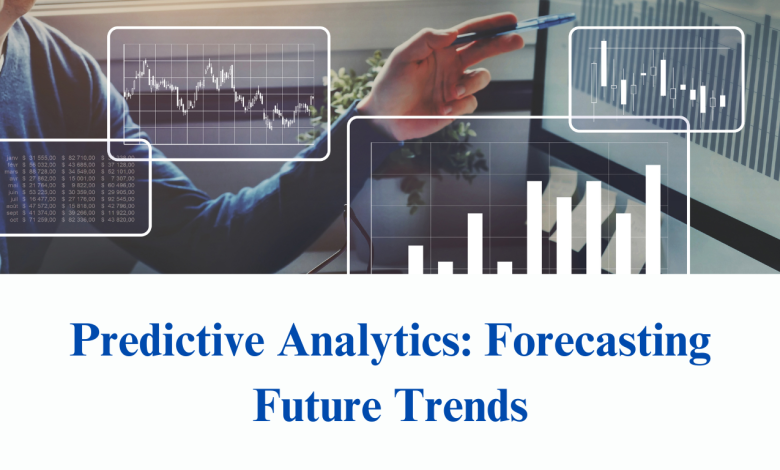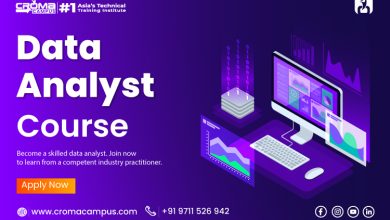Predictive Analytics: Forecasting Future Trends

In a world where data is generated at an unprecedented pace, the ability to extract meaningful insights from this vast sea of information has become paramount. Predictive analytics, a powerful branch of data science, is the key to forecasting future trends with accuracy and confidence. From business to healthcare, finance to marketing, and beyond, predictive analytics has revolutionized decision-making processes, enabling organizations to stay ahead of the curve. In this article, we will delve into the fascinating world of predictive analytics, exploring its applications, methodologies, and the potential it holds for shaping the future.
The Foundation of Predictive Analytics
Predictive analytics is a field of advanced analytics that leverages historical data, statistical algorithms, machine learning, and artificial intelligence to identify patterns and make predictions about future events. Its foundation lies in the belief that past behavior and historical data can be used to forecast future trends and outcomes. By analyzing large datasets, predictive analytics aims to uncover hidden insights and relationships that may not be apparent through traditional data analysis methods.
Applications Across Industries
The applications of predictive analytics are vast and span across various industries. Let’s take a closer look at how this powerful tool is transforming specific sectors:
1. Business and Marketing:
In the business world, predictive analytics is a game-changer. It helps companies make data-driven decisions related to customer acquisition, retention, and marketing strategies. By analyzing customer behavior and historical sales data, businesses can predict which products or services are likely to be in high demand, optimize pricing strategies, and create personalized marketing campaigns. This not only improves the bottom line but also enhances customer satisfaction.
2. Finance and Investment:
In the world of finance, predictive analytics is indispensable. It is used to forecast stock market trends, assess credit risk, detect fraudulent transactions, and optimize investment portfolios. By analyzing market data and economic indicators, financial institutions can make informed decisions that can have a profound impact on the global economy.
3. Healthcare:
Predictive analytics is revolutionizing healthcare by enabling early disease detection and personalized treatment plans. It can analyze patient data, such as medical records, lab results, and genomic information, to predict disease risks and outcomes. This proactive approach to healthcare can save lives and reduce healthcare costs.
4. Manufacturing and Supply Chain:
Manufacturing companies are using predictive analytics to optimize production processes and minimize downtime. By analyzing equipment sensor data, they can predict when machines are likely to fail and schedule maintenance before a breakdown occurs. In supply chain management, predictive analytics helps forecast demand, optimize inventory levels, and improve logistics.
5. Transportation and Logistics:
In the transportation industry, companies use predictive analytics to enhance route planning, reduce fuel consumption, and improve the overall efficiency of operations. It can predict traffic congestion, weather conditions, and delivery times, allowing companies to make real-time adjustments and optimize their supply chain.
6. Sports and Entertainment:
Even in the world of sports and entertainment, predictive analytics has found its place. Sports teams use it to analyze player performance and make strategic decisions during games. Streaming platforms use predictive analytics to recommend content to users based on their viewing history and preferences.
Methodologies in Predictive Analytics
Predictive analytics relies on a variety of methodologies and techniques to make accurate predictions. Some of the key methodologies include:
1. Regression Analysis:
Regression analysis is a statistical method used to establish relationships between variables. It helps predict a dependent variable’s value based on the values of one or more independent variables. Linear regression, for example, is used when there is a linear relationship between variables.
2. Machine Learning Algorithms:
Machine learning algorithms, such as decision trees, random forests, and neural networks, are widely used in predictive analytics. These algorithms can handle complex and non-linear relationships in data, making them suitable for a wide range of applications.
3. Time Series Analysis:
Time series analysis is used when the data is collected over time, such as stock prices or weather data. It helps identify trends, seasonality, and patterns in the data, allowing for accurate forecasts.
4. Clustering and Classification:
Clustering and classification algorithms are used to group data into clusters or categories. They are particularly useful for customer segmentation, fraud detection, and image recognition.
5. Natural Language Processing (NLP):
In applications involving text data, NLP techniques are used to extract insights and make predictions. Sentiment analysis, for instance, can predict customer sentiments based on their written reviews or social media posts.
Challenges in Predictive Analytics
While predictive analytics offers immense potential, it also comes with its share of challenges:
1. Data Quality:
Predictive models are only as good as the data they are trained on. Poor data quality, including missing values and inaccuracies, can lead to unreliable predictions.
2. Data Privacy and Ethics:
As predictive analytics relies on large amounts of data, concerns about data privacy and ethics arise. It is crucial to handle sensitive data responsibly and ensure compliance with regulations like GDPR.
3. Model Interpretability:
Complex machine learning models can be difficult to interpret. Understanding why a model made a particular prediction is essential, especially in industries like healthcare and finance.
4. Overfitting:
Overfitting occurs when a model performs well on the training data but poorly on new, unseen data. Balancing model complexity is essential to avoid overfitting.
5. Continuous Learning:
The data landscape is constantly evolving. Models must be continuously updated and retrained to remain accurate as new data becomes available.
The Future of Predictive Analytics
As technology continues to advance, the future of predictive analytics holds even more promise. Here are some trends and developments to watch for:
1. AI-Powered Predictive Analytics:
Artificial intelligence and machine learning will play an increasingly significant role in predictive analytics. These technologies will enable more accurate predictions and automate decision-making processes.
2. Explainable AI:
To address the issue of model interpretability, explainable AI techniques will become more prevalent. This will help users understand why a particular prediction was made.
3. Real-time Predictions:
With the growth of IoT (Internet of Things) devices and edge computing, real-time predictive analytics will become the norm. This will be especially valuable in applications like autonomous vehicles and healthcare monitoring.
4. Automated Machine Learning (AutoML):
AutoML platforms will simplify the predictive modeling process, making it accessible to a broader audience. These platforms will automate tasks such as data preprocessing, feature engineering, and model selection.
5. Ethical AI and Responsible Data Use:
The ethical use of predictive analytics will be a top priority. Organizations will need to implement robust data governance and ethical AI frameworks to ensure responsible data use.
Why Pursue a Data analytics Course?
Pursuing a data analytics course in Hisar, Delhi, Noida and all Locations in India. can be a smart and rewarding decision for a variety of reasons. In today’s data-driven world, organizations across industries rely on data analytics to make informed decisions, gain a competitive edge, and solve complex problems as information is generated at an unprecedented rate. Here are several compelling reasons why one might consider pursuing a data analytics course:
High Demand for Data Analysts:
Data analytics is one of the fastest-growing fields in the job market. There is a significant and ongoing demand for skilled data analysts who can collect, process, analyze, and interpret data to drive business decisions. This demand is likely to continue growing as organizations recognize the value of data-driven insights.
Career Opportunities:
Completing a data analytics course opens up a wide range of career opportunities in various industries, including finance, healthcare, marketing, retail, technology, and more. Data analysts are in demand not only in traditional sectors but also in emerging fields like e-commerce, artificial intelligence, and data science.
Competitive Advantage:
Data analytics skills can give you a competitive advantage in the job market. Employers increasingly value candidates who can use data to solve problems, make decisions, and contribute to the organization’s success. Having data analytics expertise can set you apart from other job applicants.
Salary Potential:
Data analysts often command competitive salaries due to the specialized nature of their skills and the high demand for their expertise. As you gain experience and expertise in data analytics, your earning potential can increase significantly.
Also Read This Article-Exploring Design Patterns in Java
In conclusion, predictive analytics is a powerful tool that has the potential to reshape industries and drive innovation. By harnessing the power of data, organizations can make more informed decisions, reduce risks, and seize new opportunities. However, it’s crucial to approach predictive analytics with care, addressing challenges such as data quality and ethical considerations. As technology continues to evolve, the future of predictive analytics promises to be even more exciting, enabling us to forecast future trends with greater accuracy and confidence than ever before.
Also Read-Ultimate Solution to Quickly Change File from PDF to PNG without Losing Quality



